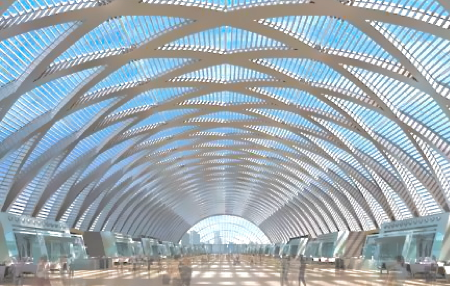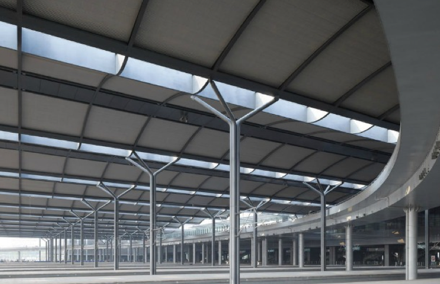Table of Contents
Download Planning for a New Northeast Corridor:

Download The Hudson Terminal Plan:

Download the Trends & Opportunities Report:

Economic Impact
The Hudson Terminal Plan will, for the first time, enable trains on the Main, Bergen County, Pascack Valley, Port Jervis, and Meadowlands Lines as well as Hudson-Bergen Light Rail Lines to terminate in Manhattan. With the implementation of an improved Waterfront Connection, the Raritan Valley Line, the North Jersey Coast Line south of Bay Head, and the Montclair-Boonton Line west of Montclair State University would also have direct service to Manhattan. AM and PM peak hour NJ Transit service into Manhattan would increase from the current maximum capacity of 23 trains per hour to 73 trains per hour. Further, upon opening Hudson Terminal and Hoboken Tunnel, NJ Transit service into Manhattan would immediately double without having to increase the number of total daily trains due to the large number of existing trains that already terminate in Hoboken. Total trips into Penn Station would decrease slightly with this new service into Manhattan and as some Northeast Corridor trains are rerouted into Hudson Terminal.
With the implementation of the Hudson Terminal Plan, the number of trans-Hudson bus trips would decrease by approximately 10%. Projected daily one-way linked trips on PATH service to midtown Manhattan would decrease by approximately 30% from 130,000 to 90,000. Future daily one-way linked ferry trips to midtown Manhattan would decrease by 30%. Further, daily demand for trans-Hudson auto (vehicle) trips would decrease by approximately 5% percent, and as a result, there would be fewer auto trips along local routes to commuter rail in the project area.
In terms of jobs, the construction of Hudson Terminal and its related elements will result in the creation of approximately 6,000 construction-related jobs each year resulting in an increase in gross regional product by $675 million per year and real personal income by over $400 million per year. Direct, permanent economic benefits accruing to the metropolitan region as a result of the annual operation and maintenance of Hudson Terminal and its related elements include the direct employment of over 750 jobs in the transportation and transit services industries, almost $16 million in local, state and federal taxes, $46 million in personal income, and over $120 million in business activity.
The implementation of the Hudson Terminal Plan will also have important long-term, indirect benefits for the economies of both New York and New Jersey. This is partly attributable to efficiencies resulting from increased NJ Transit operations and maintenance, but chiefly due to increased regional competitiveness within Manhattan’s West Side development zones. The region as a whole would gain approximately 100,000 jobs within 10 years of Hudson Terminal’s opening. These jobs will result from increased regional competitiveness as businesses relocate or expand within the region due to such factors as better quality of life, commuter access, transportation cost-savings, and lower regional housing cost. Gross regional product is projected to increase by $12 billion as an indirect result of the implementation of the Hudson Terminal Plan, with total personal income benefits for the region increasing by nearly $5 billion.


